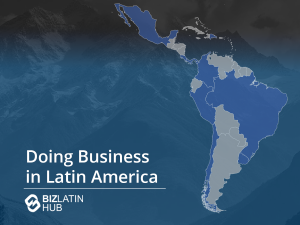Incorporating a company in New Zealand is a very strategically sound decision in today’s global economy. The country possesses leading industries such as agriculture, mining, renewable energy, and many others. No matter the sector, there are advantages to starting a business in New Zealand.
However, before moving a business to the South Pacific, it’s important to understand the job market and the costs associated with the hiring new employees in New Zealand.
Cost of Hiring in New Zealand – Recent trends in New Zealand job market

Currently, the job market in New Zealand is experiencing positive trends and is looking to continue growing. In 2018, the unemployment rate was the lowest it has ever been in the last 10 years, at 3.9%. As the job market and industry sizes increase, the unemployment rate will surely continue to decrease. Moreover, with the expansion of New Zealand’s economy, the country’s national job market will become more globalized and innovative.
Furthermore, the overall workforce is adjusting and adopting the concept of flexible working hours. Just recently, companies like Perpetual Guardian, a New Zealand estate planning company, implemented a four-day work week for its employees, while still paying the equivalent of a five-day work week. Astonishingly, the company saw a significant decrease in employee stress levels and a 20% increase in employee productivity. It could be advantageous for other businesses to adopt the same policies in the coming years.
Finally, as the economy becomes more globalized, opportunities within the job market are set to expand as well. For example, the construction industry will see vacancies in about 80,000 jobs nationwide. Additionally, positions in New Zealand’s weaker industries will see an increase in job demand as well in order to grow the market. Most notably, demand for IT jobs will reach an additional 3,200 by 2020.
Costs to start the process

The cost of hiring a new employee in New Zealand is very much dependent on the industry and/position a company is searching in. However, there is a general baseline for costs when searching for the newest team member.
The first part of recruiting involves advertising the job position itself. The most common way of doing this nowadays is through online platforms. Generally, these platforms can be a tad expensive. For example, Seek, New Zealand’s #1 job posting platform, can cost about $275 per job posting for 30 days’ exposure. There are other websites with cheaper alternatives, such as CareerOne. Ultimately, since the world is so digitized, posting job vacancies online is necessary.
After advertising the job and interviewing candidates, the company decides which candidate to move forward with. Thus the process of on-boarding and training begins. Depending on the size of the company, costs associated with this process can vary. Nonetheless, it can still be an expensive endeavor. Between 2015 and 2017, training new employees cost small companies, on average, over US$1,500. For larger companies, the costs dwindle due to refined, efficient, and specific processes.
It is important to keep in mind that the timeline, and the budget, for new employee training can fluctuate. Typically, they are dependent upon the job position, industry, and the employee’s previous work experiences. Being flexible throughout this process is essential when taking into account the long-term plan.
Longevity of costs
Truthfully, the bulk of costs associated with bringing on a new employee is in the beginning phases. Most notably, these include processes aforementioned. However, bringing on a new employee in New Zealand has long-term costs as well.
Firstly, the salary of the position is likely to make up the largest chunk of the long-term costs. Overall, this depends on the industry of the company and position of the new employee. It is important to confirm that the business can withstand the costs associated with the new employee in the long-run before bringing them on. Additionally, managers should understand that, on average, it takes about six and a half months for the company to start ‘breaking-even’ on the new hire. This is measured in comparison to up-front costs and salary against the productivity and output of the employee.
Moreover, as a registered company in New Zealand, a percentage of the salaries is taken out for government programs like the Accident Compensation Corporation. The percentage taken out as a ‘levy’ is based on a progressive tax system in the country.
Government-supplied salary and hiring guides

When considering starting a company in New Zealand, the tasks and legislation at hand can seem daunting. Keeping this in mind, the country’s government established a handful of helpful websites for startups to refer back to.
The Ministry of Business, Innovation, and Employment (MBIE) has a general salary guide to help companies get an idea of national wages based on industry. The site lists the industry, median salary, and the range of salaries paid within the country. Moreover, it gives adjusted figures based on education and experience level of the new hire.
Additionally, the website gives insight into job shortages within the country and how that could affect the labor market.
Finally, the site also has a guide on when and how to hire new members. Some stages in corporate growth are more suitable for bringing on new employees than others. MBIE gives businesses an idea on when the most ideal hiring stages are within a company to minimize costs.
Looking to hire in New Zealand?
With the abundance of business opportunities in New Zealand, it makes sense the globalized companies are moving into the market. Not only are there business opportunities, but also an array of openings and possibilities within the country’s job market.
The process and logistics of hiring employees in a foreign country can seem daunting. Luckily, our team at Biz Latin Hub has plenty of experience in this field. If you are looking to expand globally, reach out to us now to get personalized strategies and support for your next business endeavor.




